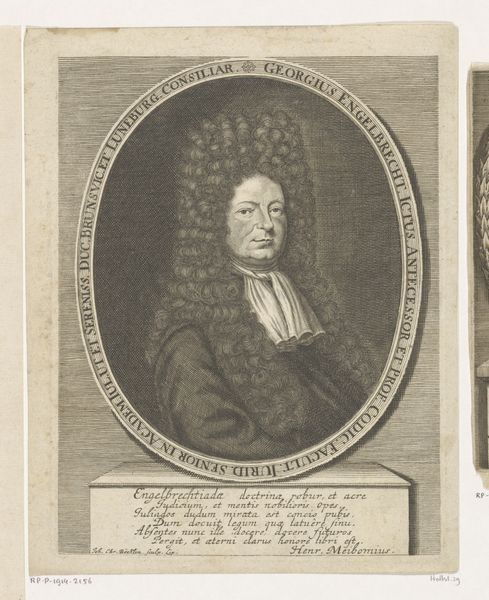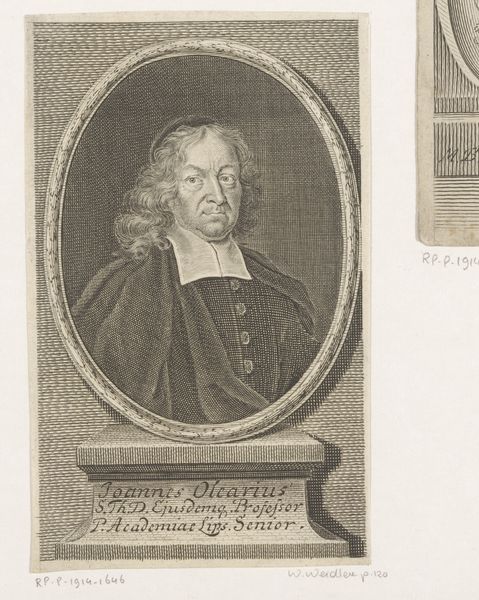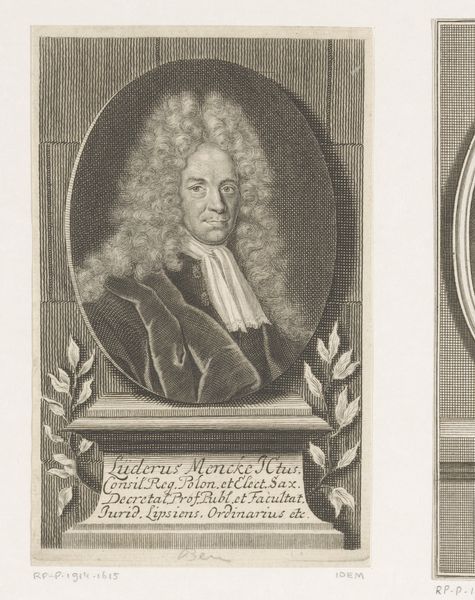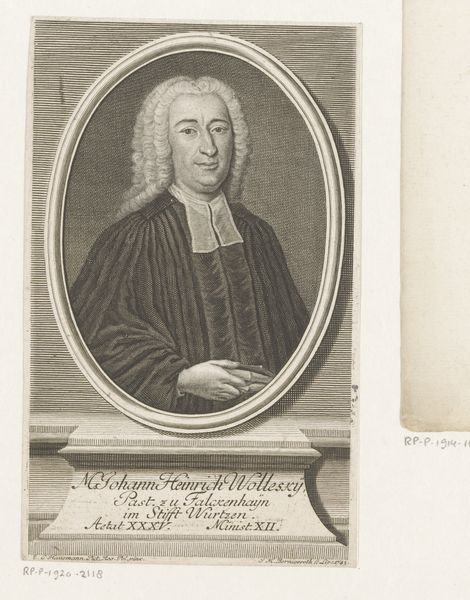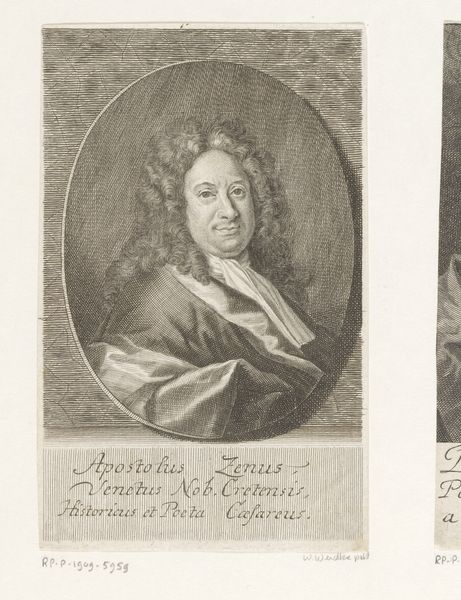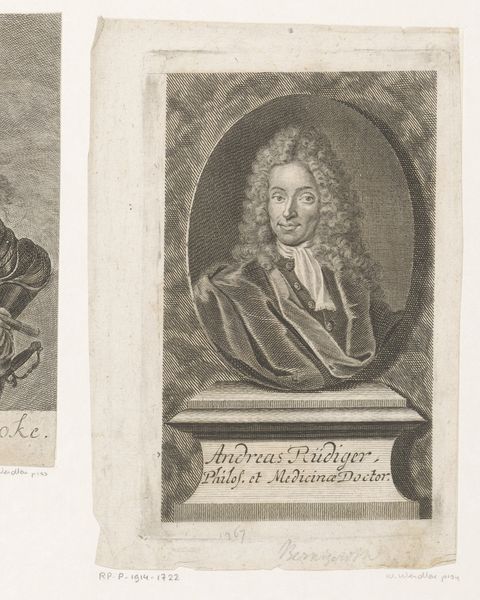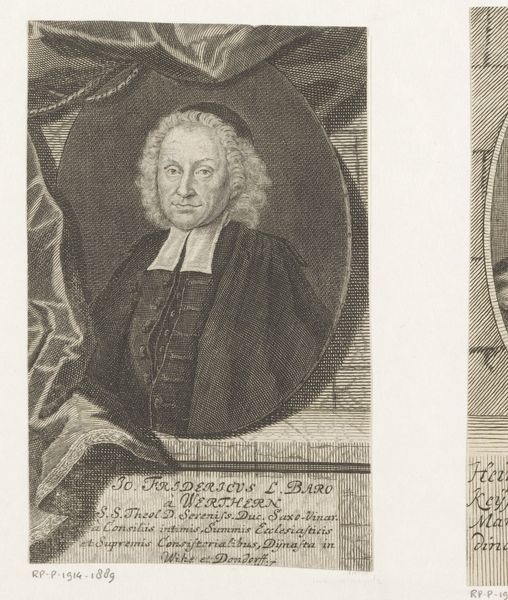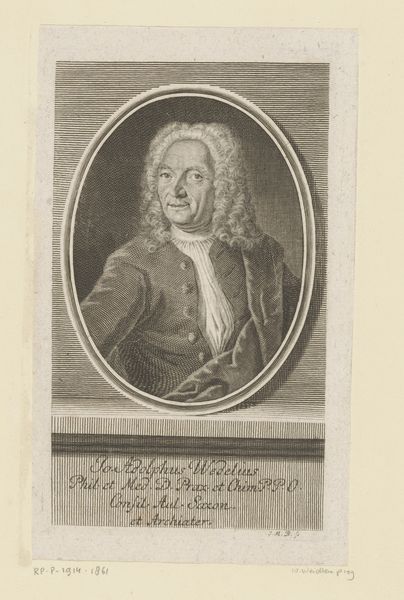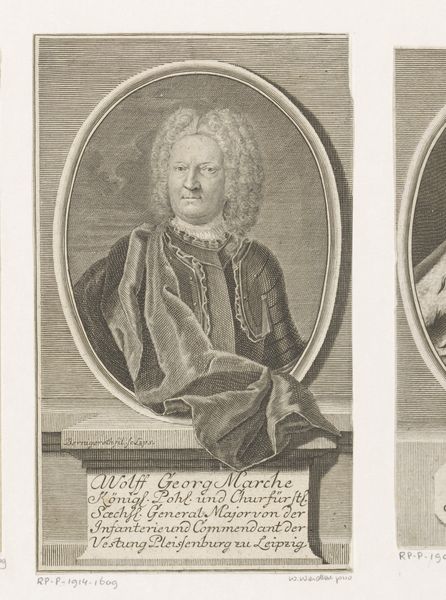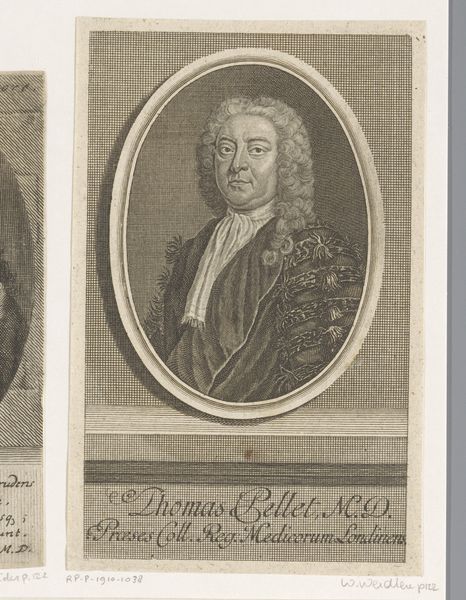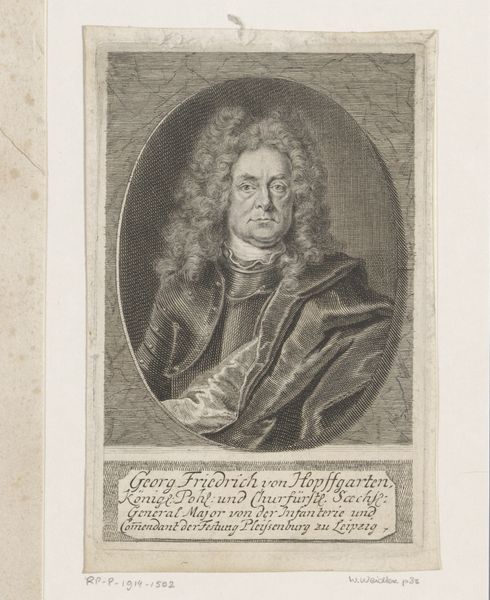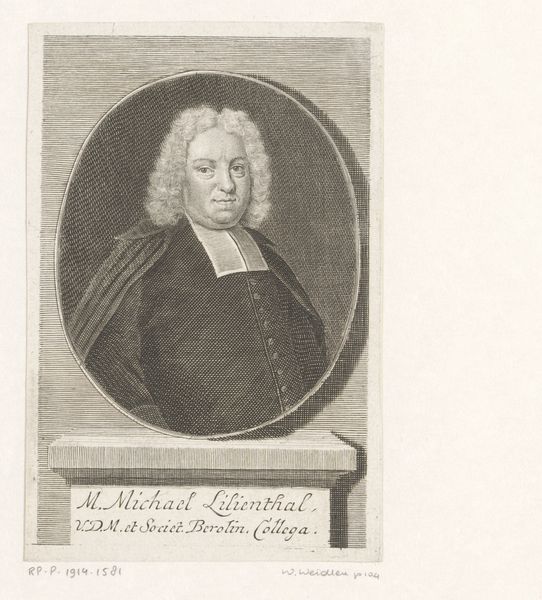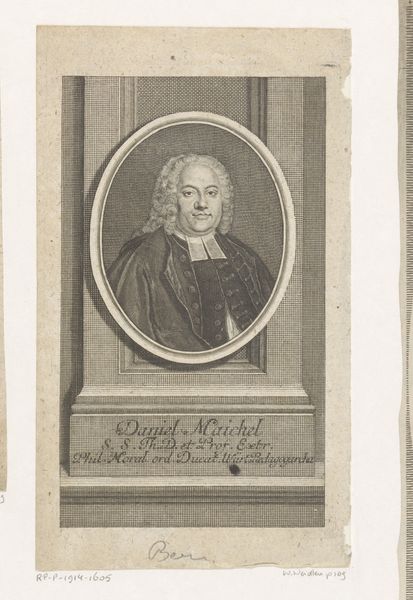
engraving
#
baroque
#
old engraving style
#
history-painting
#
engraving
Dimensions: height 150 mm, width 93 mm
Copyright: Rijks Museum: Open Domain
Editor: Here we have a portrait of David Millius, an engraving by Johann Martin Bernigeroth from 1746. It feels very formal, almost like an official record. What do you see in it? Curator: I see a carefully constructed image, intended to convey authority and learning. Consider the oval frame: it’s a visual echo of ancient cameos, immediately associating Millius with a classical tradition of wisdom and scholarship. The elaborate script beneath further cements this connection. Editor: So, the form itself carries meaning? Curator: Absolutely! Even the tight, controlled lines of the engraving, the almost photographic detail achieved solely through line work, suggests a desire for precision and accuracy, qualities one would expect from a scholar of Hebrew and Oriental languages. Look at how the gaze is directed; how would you describe the impression this gaze leaves you with? Editor: He looks very serious, maybe even a little stern. It makes me wonder what kind of man he really was. Curator: Indeed. Portraits like these are often less about capturing a literal likeness and more about creating an image, an ideal, to be remembered by. Think about the symbolic weight of the wig; how did those cues translate to a 18th century audience, compared to what they mean today? Editor: I guess I hadn't considered how much a simple portrait could tell us, not just about the subject, but also the values of the time. Curator: Exactly. These visual choices weave together to construct a narrative of erudition and status that still speaks across centuries.
Comments
No comments
Be the first to comment and join the conversation on the ultimate creative platform.
